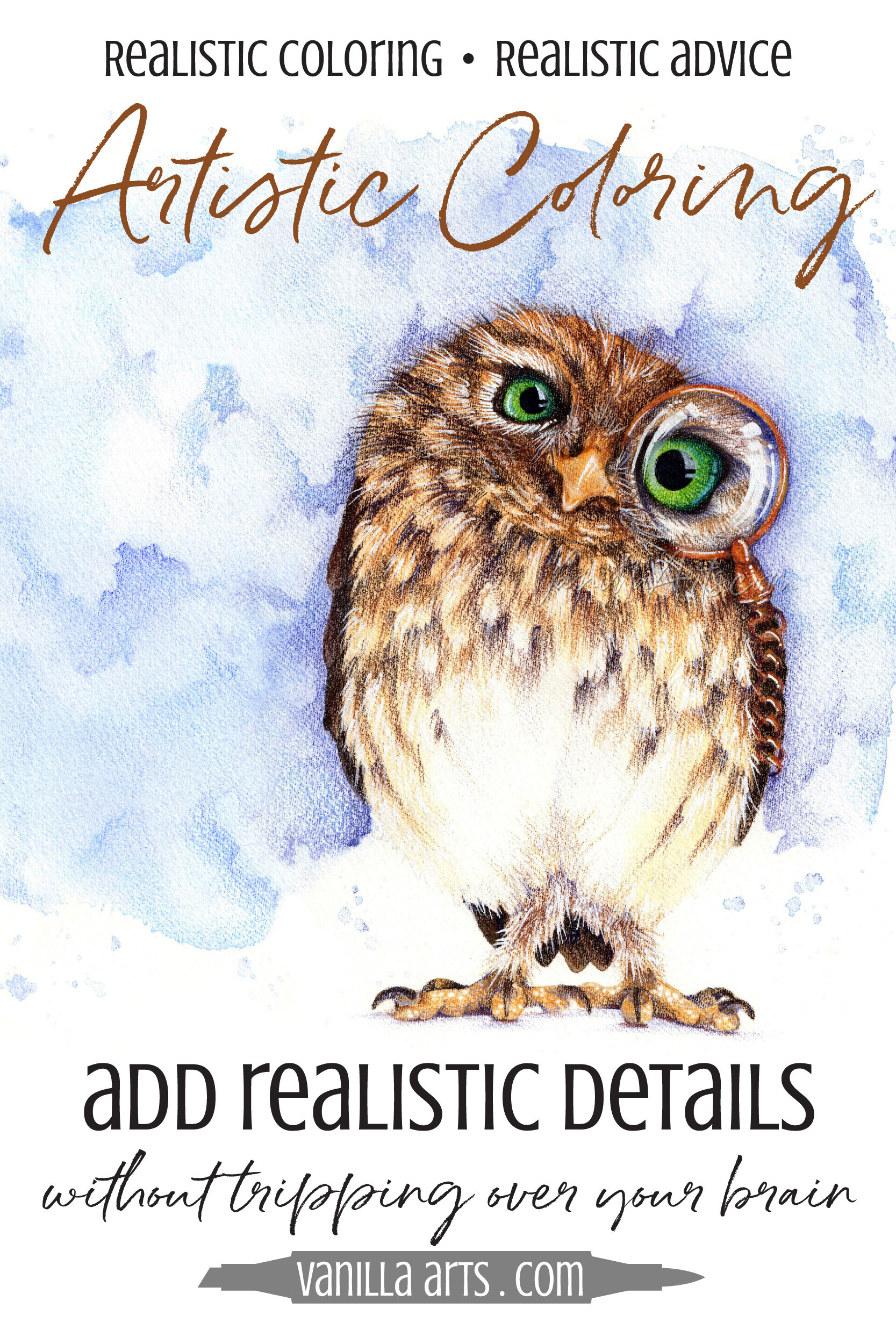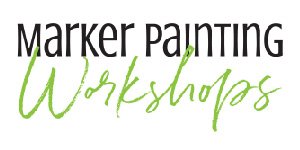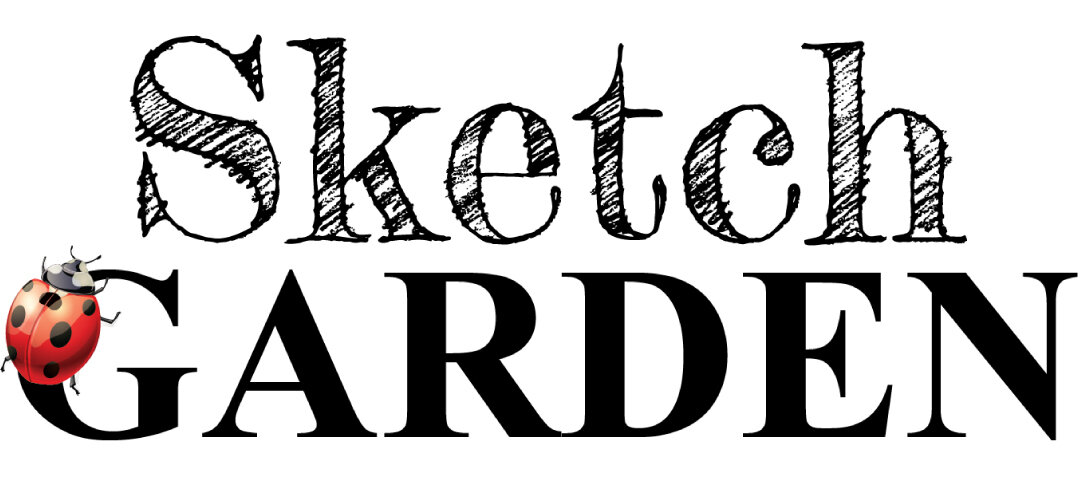Do you struggle to color Without demonstrations or tutorials?
You want grow as an artist. You set a goal to ditch the Copic Marker or colored pencil tutorials and to color more independent projects with your own artistic flare.
But instead, you stare at the stamped image or line drawing with no idea where to start.
So you break the image down into its components.
Everyone knows what eyes look like— they’re shaped like footballs. They have long eyelashes on the outside and black dots in the center.
And you definitely know how feathers look— they’re like long skinny leaves and they’re staggered like roofing tiles. Feathers have thick lines down the center and little fine lines branching off to the left and right.
STOP!
You’re coloring from your brain.
You and your brain are about to make some very unrealistic art!
Coloring realistic details is one of the hardest things about working independently without Copic Marker or colored pencils tutorials. Are you coloring what you see or what you think you see? A professional artist explains the difference and offers tips for creating greater realism in your art.
I’m sorry, but it’s true:
Some realistic coloring projects turn out weird and kind’a freaky looking.
It’s not because you lack skill or talent. It’s because beginners often trip over their own brains.
Getting past the brain hurdle is something EVERY beginner must do if they intend to grow and mature as an artist. There’s nothing to be ashamed of, it’s just a normal part of the learning process.
Beginners often color or draw stereotypes rather than what they actually see.
You let your brain override what your eyes are telling you.
Beginner artists add too many details, emphasize the wrong details, and draw details as they expect them to look, not as they actually look.
Developmentally, this is very normal. It’s where we all start out.
In introductory drawing classed, beginners are forced to confront our brain’s shortcuts and stereotypes right away. Early drawing lessons are nothing more than learning to observe the actual realistic shape of objects and then recreate these observations on paper.
But in coloring, artistic skills come in a different order.
Many extremely talented colorers with years of experience have never learned to color with their eyes. They don’t even know they color from their head until they try to color something realistic without a demonstration or tutorial to guide their way.
It doesn’t matter how amazing your coloring skills are— if you haven’t learned to observe realistic details, then you’re back at the same level as a beginner drawing student.
And this means coloring some seriously weird stuff until you get better at seeing details with your eyes, not your head.
More Detail Coloring Tips:
Don’t miss my previous articles on similar topics!
“I feel lost! I don’t know How to color this.”
When you’re unsure about how to color something on on your own, you scramble to find an answer. C’mon brain! Think, think, think!
Not knowing what to do feels terrible.
Doing something, doing anything feels better than staring at an empty line drawing with no clue what to do.
This is where you start to overthink things.
It’s an owl.
Owls have feathers.
I’ll bet owls have hundreds of feathers. I think I can draw a simple feather, just as I saw on YouTube last month.
So that’s my plan, I’m going to cover this owl with lots of feather shapes!
It all feels great until you realize your owl is covered with strange roofing shingles.
Beginners do this kind of thing all the time, even when they have a great photo reference to work from.
Look at my photo reference here. Do you actually see any feather shapes there?
I frequently ask students:
Are you coloring what you see or what you think you see?”
I constantly ask myself the exact same question.
It seems like such a simple thing but I’ve worked professionally for 26 years and I still catch myself trying to draw what I think instead of what I see.
Don’t overthink the details
We think our brain is an amazing supercomputer.
But our brains are really bad at remembering how things look.
Our brains are also lazy! If there’s a shortcut, your brain has no problem skipping steps 1-7 to get you into the end zone first.
The secret to realism is to stop thinking so darned hard and just go look.
The more you color from your head, the less realism you’ll capture.
I love to challenge students with birds because feathers catch the students who pretend to look at photo references because Amy told them to.
Uh, folks, I tell you to look at the photo reference because I want you to actually look at the shape, color, and details in the photograph.
But no, we have this weird, cartoony idea in our heads of what feathers should look like, so we plow ahead and draw roofing shingles.
But if you observe photos of actual birds, body feathers look like tufted clumps of fur. Most feathers are far too small to see the traditional plume shape.
Your brain is stuck thinking of the wing feathers that Thomas Jefferson used to write the Declaration of Independence.
You won’t see large wing feathers unless your bird is in flight!
The bird you color from your head won’t look realistic because your brain is busy thinking of Thomas Jefferson, the wrong kind of feathers, what to have for lunch, what’s on the radio, and all kinds of other random stuff.
Use your eyes. The details you need are right there in the photograph, waiting for you to see them.
Think less, look more.
Photo references are better than coloring tutorials
All those fun YouTube “How to Color a _____” tutorials are not worth your time.
I know, I know. I just struck a nerve there. We all love a good video. Free tutorials make the coloring world go ‘round. Yadda, yadda, yadda.
The dirty truth is that tutorials often do more harm than good.
By how-to, I mean the videos that show the process for specific objects or textures. How to color an eye, how to color a dog’s nose, how to color a leaf or an owl or wood grain or bubbles…
The list of how-tos is endless.
You’re falling into the tutorial trap where you search for a prepared list of steps for everything you want to color.
Folks, art doesn’t work that way.
Realistic coloring projects are a challenging puzzle, a mystery to solve, a code to break. You’re being asked to problem-solve.
Puzzle: Here’s an owl drawing, now how do we make it look dimensional and real?
A tutorial is one person’s solution.
It’s one way to get the job done, but it’s not the only way to get the job done.
It’s also not the way you’d solve the puzzle if you tried.
When you use their solution, you’re not being true to your inner artist.
The other problem with online tutorials is that they rarely translate to your unique situation.
Even if you happen to find a tutorial which matches your species of owl, it won’t be from the same angle or even at the same scale. A tutorial for a 16” owl won’t apply to your 8 inch owl. You can’t add all that detail to half the space.
And here’s something nobody ever bothers to ask when searching for tutorials: Is this person demonstrating at my skill level?
It would be fun to watch Rembrandt paint an owl but how much of his advanced technique can you really use? How much do you even understand?
But when YOU look at a photo reference, you’re not looking at it with Rembrandt’s eyes,
You and Rembrandt may be looking at the same owl photo but he’s seeing it at his level and you’re seeing it at yours,
You’re seeing the owl at your skill level.
The details YOU see are the ones you are able to understand.
This is what makes photo references so valuable. Your eyes do not overwhelm you with advanced 42 step techniques using products or colors you don’t even own.
When you color what you see, you see the details you’re ready to see.
I’ve done this a million times in my career, I look at something a decade later and wonder why didn’t I add the this and that and why did I skip the other thing?
It’s because I wasn’t ready to draw those details at that time. I wasn’t ready, so I didn’t even notice them.
Don’t get caught on repeat!
Did you know the average human has about 100,000 hairs on their head?
I know, because many students try to draw every single hair. They get tired about halfway through and it devolves into scribbles.
They’ve stopped looking with their eyes and started following their head again.
Let’s think about this for a second.
Your brain rationally says:
People have hair and hair is made up of little tiny hairs. If I draw all the little tiny hairs, it will look beautiful and amazing.
Your brain cons you into drawing thousands of lines without stopping to think about the fact that you’re using very large art supplies
A single stroke of Copic is 1/16th of an inch wide. That’s 30 times the size of a human hair.
One sharpened pencil stroke is at least 5 times the size of a hair and that’s only on the first stroke while it still has a sharp point.
Unless you’re coloring a large mural, your hairs are monstrously out of proportion.
Don’t let your brain bog you down repetitive details like hair, fur, eyelashes, feathers, etc.
It doesn’t look good.
In art, it’s called grotesque when you detail something at the wrong size or ad infinitum. It gives people the creeps.
Grotesque ain’t good.
To color realistic details, color what you see with your eyes. From a normal distance you don’t see someone’s individual hairs. Your hair style is what people focus on. The overall shape of the hairstyle is far more important to capturing someone’s likeness.
Eyelashes are so unimportant that most professional artists don’t even draw them, we thicken the weight of the eyelid instead. When I do portraits, I don’t even draw actual eyebrows, I do a gentle swash along the bottom of the brow.
In the case of a bird, we all know birds have feathers. We don’t need you to draw a thousand feathers to understand it’s an owl.
I’m a Technical Illustrator, I specialized in high-detail educational drawings for textbooks and instruction guides. Showing people how something looks was my job. Even then, I didn’t draw every screw on a machine or tiny capillaries on an organ.
Artists do what’s called “indication” and that’s exactly what I’ve done here with the Know it Owl project. I’ve given you the suggestion of feathers, not actual feathers.
Trust your audience. They understand the point without you adding five thousand hairs or feathers.
Less is more.
Ask for quality, qualified feedback
After you’ve stared at your artwork for hours, investing your heart and soul into the project, you can’t see your details clearly anymore.
You’re too emotional to judge if it looks good.
And you’re too time-invested to tell if you colored with your eyes or straight out of your head.
Ask for feedback.
Not from randos on the internet and not from the people who love you.
Family members say it’s beautiful no matter how bad it looks. They don’t want to hurt your feelings. They also want you to make dinner tonight.
Ask your instructor or join a real feedback group.
You hesitate to ask for feedback because you’re afraid of what you’ll hear.
This is normal.
But you can’t learn if can’t see your own work clearly. You’ll never improve if you can’t see what’s wrong.
You have to hear about bad stuff to fix the bad stuff.
I’ve been to art school. Now that I’m teaching online where most of my students started with books or videos, I can honestly say without hesitation:
You don’t need to go to art school to become an artist. You can learn a lot of this stuff on your own.
BUT (and this is a very big but)
Art school provides something which can not be conveyed easily online and it’s completely missing from most online coloring classes:
Intensive, personalized, constant, and expert feedback
It’s not just the big weekly critique sessions that are missing from online learning. As an online art instructor, I can’t do the little things that in-person instructors routinely do— like walk around the room and look over your shoulder as you work. I can’t give you a gentle nudge towards a better color, I can’t smile with you when you finally master something. I can’t pause what you’re doing to discuss the next steps and prevent mistakes from progressing.
And I can’t easily challenge you about what you see versus what you think you see.
Time and time again in art school, it was the instructor who guided me back to using my eyes instead of drawing or painting from my head.
Please: If you’re learning online or learning on your own, you need quality feedback. As much feedback as possible.
Ask someone you trust who also knows more about art than you do. There’s no way around this part.
You need qualified guidance.
Use your eyes to find and observe accurate details
…. instead of coloring mis-remembered mish-mash from your head.
If you can’t see it in the reference, then that detail is too small or inconsequential to be added to your project.
I know it’s hard when you’re first starting out. But the more you push yourself to color independently without tutorials, the easier it gets. It takes time to get comfortable with the observation process.
It’s not just you. Every artist starts just as slow.
We were all in your shoes once.
Don’t overthink what you’re doing. Clear your mind and simply observe what you see in photos and in real life examples.
The key to realistic coloring is to look at reality.
Every artist must do this.
It’s a myth that real artists only draw, color, or paint from their imagination.
Sure, I’ll admit that I can now sit down and draw fairly realistic from my head but it took a lot of years and practice to get there. And I’m always referring back to photo references, studies, or sketches that I’ve done from real life. Every artist takes field trips and are constant observers of life around them.
No artist is so good that they don’t need an eraser.
When an artist erases, it’s usually because their brain got in the way of their eyes.
The details, color, creativity, and your future artistry are all there in your references, waiting for your eyes to discover them.
Feathery Challenge
Create realistic birds full of personality. Birds are more than just feathers!
Know it Owl
Artistic Coloring Kits are everything you need to challenge yourself with intermediate to advanced level images.
Explore your knowledge of texture and lost edges to achieve semi-realistic birds with personality!
Let your skill & creativity be the star of the image, not the stamp art. Ideal for large-scale projects in Copic Marker, colored pencil, or watercolor
Kit includes: digital stamp, suggested supply list, photo references, guide to shade and shadow & underpainting advice, color map & coloring process tips & photo collage
Select Products used in Know it Owl:
Vanilla Arts Company is a participant in the Amazon Services LLC Associates Program, an affiliate advertising program designed to provide a means for use to earn fees by linking to Amazon.com.


























